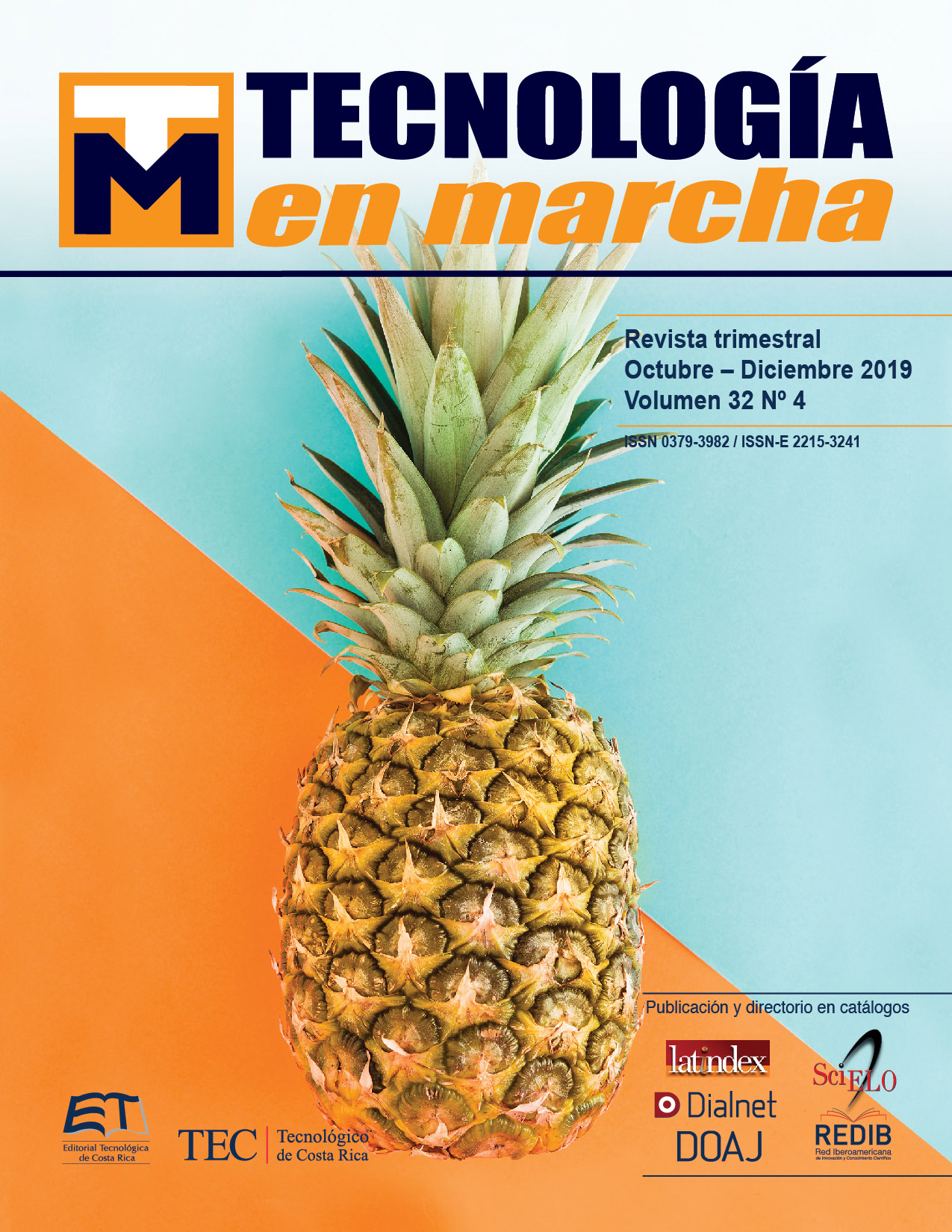Determination of Environmental Flow of the Birrís River, Costa Rica
Main Article Content
Abstract
In Costa Rica, the environmental flow corresponds to 10% of the average river flow. This percentage has lacked of scientific basis in relation to the fluvial conditions suitable for preserving the ecosystems present in the river. Water concessions for the main uses (human, agricultural and hydroelectric) have caused environmental damages, transforming the physical and chemical conditions of the channels. Of the water flow of the Birrís River, 20% is granted for consumptive use as agricultural, human and irrigation production, and the rest is used for hydroelectric generation. Due to the low quality of its waters to date there are no indicator species that makes it impossible to use approaches that take into account ecosystems to generate preference curves. The present work used a hydrological approach to determine the environmental flow of the Birrís River using the flow duration curve methodology. It is based on the analysis of series of climate data obtained for 10 years and series of daily flows from a period of three years. Three outflows of biota and flow were made in three points distributed along the main channel distributed over a period of one year. Finally, the environmental flow was determined based on the flow regime of the average monthly values.
Article Details
Los autores conservan los derechos de autor y ceden a la revista el derecho de la primera publicación y pueda editarlo, reproducirlo, distribuirlo, exhibirlo y comunicarlo en el país y en el extranjero mediante medios impresos y electrónicos. Asimismo, asumen el compromiso sobre cualquier litigio o reclamación relacionada con derechos de propiedad intelectual, exonerando de responsabilidad a la Editorial Tecnológica de Costa Rica. Además, se establece que los autores pueden realizar otros acuerdos contractuales independientes y adicionales para la distribución no exclusiva de la versión del artículo publicado en esta revista (p. ej., incluirlo en un repositorio institucional o publicarlo en un libro) siempre que indiquen claramente que el trabajo se publicó por primera vez en esta revista.
References
[2] R. E. Tharme, “A Global Perspective on Environmental Flow Assessment: Emerging Trends in the Development and Application of Environmental Flow Methodologies for Rivers,” River Res. Appl., vol. 19, pp. 397–441, 2003.
[3] L. Poff et al., “The Natural Flow Regime : A Paradigm for River Conservation and Restoration,” Bioscience, vol. 47, no. 11, pp. 769–784, 1997.
[4] A. H. Arthington, S. E. Bunn, N. L. Poff, and R. J. Naiman, “The challenge of providing environmental flow rules to sustain river ecosystems,” Ecol. Appl., vol. 16, no. 4, pp. 1311–1318, 2006.
[5] J. E. Barrios-Ordóñez et al., “Proposal for an Environmental Flows National Standard,” in 31st Annual Meeting of the International Association for Impact Assessment, 2011.
[6] J. Calvo Alvarado, J. A. Jiménez, E. González, F. Pizarro, and A. Jiménez, “Determinación preliminar del caudal ambiental en el río Tempisque , Costa Rica : el enfoque hidrológico con limitación de datos,” Kurú, vol. 5, no. 13, pp. 1–18, 2008.
[7] P. Alonso-EguíaLis, “Requerimientos para Implementar el Caudal Ambiental en México,” Instituto Mexicano de Tecnología del Agua, Alianza World Wildlife Fund/Fundación Gonzalo Río Monte, Programa Hidrológico Internacional, Mexico, 2007.
[8] J. F. Casanova and A. Figueroa, “Determinación del caudal Ambiental y su Relación con Variables Indicadoras de Calidad del Recurso Hídrico,” Luna Azul, no. 40, pp. 5–24, 2015.
[9] C. Consuegra Martínez, “Síntesis Metodológica para la Obtención de Caudales Ecológicos (Qe), Resultados y Posibles Consecuencias,” Tesis de Posgrado en Ingeniería Civil, Especialización en Recursos Hidráulicos y Medio Ambiente, Escuela Colombiana de Ingeniería Julio Garavito, Bogotá, 2013.
[10] E. Lianes, M. Marchamalo, and M. Roldán, “Evaluación del factor C de la Rusle para el manejo de coberturas vegetales en el control de la erosión en la cuenca del río Birrís, Costa Rica,” Agron. Costarric., vol. 33, no. 2, pp. 217–235, 2009.
[11] J. Seibert, “HBV Light Model,” 2005. .
[12] M. A. Gómez Balandra, M. del P. Saldaña Fabela, and S. Rodríguez Torres, “Importancia de los Componentes del Caudal Ecológico para el Aprovechamiento del Río Omitlán, Guerrero,” in 1er Congreso Iberoamericano sobre Sedimentos y Ecología, 2015, pp. 21–24.

